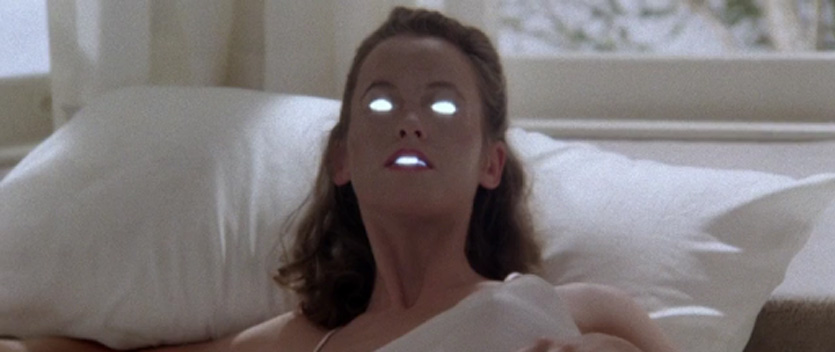‘The empty vassel makes the greatest sound.’ —Shakespeare
Othello syndrome is a psychosis with delusions of infidelity, where the patient harbors a persistent, unfounded belief – a “delusion” – that their partner is being unfaithful. We report a rare case of a 50-year-old woman, with no previous psychiatric history, who developed a delusion of infidelity, leading to verbal and physical aggressions with bladed weapons, days after experiencing a bi-thalamic infarct due to the occlusion of the Percheron artery. […]
H.S. is a 50-year-old right-handed woman who had been in a joyful, jealousy-free marriage for three decades and was completely independent in all areas of daily living activities. Seventeen days from the onset of her symptoms and two days post-discharge, she exhibited symptoms of delusional jealousy, accusing her younger sister of having an affair with her husband and wanting to kick her out of the house, even though her sister had just come to visit her upon her hospital discharge.
She started repeating to everyone coming to visit her that the cause of her illness was her husband’s infidelity. She kept accusing her sister for a week and then shifted her accusations to her friend’s daughter. She became suspicious and hyper-vigilant, seizing every chance to check her husband’s phone, spying on him, and frequently waking him up at night to confront him, with accusations like “Why are you here sharing my bed when you’re cheating on me?”
A year later, she verbally and physically assaulted her husband, using a bladed weapon on two separate occasions. Despite denial of these attacks, she persisted in her accusations of betrayal.
{ Neurocase | Continue reading }
A 68-year-old, right-handed, married male was admitted to the psychiatric facility for evaluation of agressive behavior toward his wife, whom he believed was having an affair with their 25-year-old neighbor.
The patient developed the belief of his wife’s infidelity shortly after a right cerebrovascular infarction 1 year earlier. He became impotent after the infarction, and a urologic consult discovered no other identifiable medical etiology. The patient became suspicious of the alleged affair when he began “putting together” evidence from various sources. For example, he noticed that his wife began leaving the first floor bedroom window open at night, presumably to allow her “lover” to enter the room while the patient was asleep. He found tracks in the snow beneath the window, and he noticed that the dust was disturbed on the window sill, which he took as evidence that the neighbor had entered through the window.
On another occasion, the patient discovered that his neighbor had generously offered to perform routine chores around the couple’s home, including fertilizing their lawn. The patient’s physical disabilities prevented him fromperforming such chores, and he interpreted this gesture as a threat to his marriage.
In response to the patient’s accusations, his wife began severely restricting her activities. She became fearful of getting up at night to go to the bathroom because the patient often awoke to reassert his belief that she was getting up to meet with her lover.
Furthermore, despite his impotence, he became sexually aggressive with his wife, repeatedly approaching her whenever she came to bed and demanding verbally and physically that she engage in intercourse with him. His advances would keep his wife awake all night, so that she eventually moved to a second bedroom, a decision that was interpreted by the patient as further proof that his wife was having an affair. Psychiatric hospitalization was finally precipitated by the patient’s increased threats to assault his wife if she did not discontinue her alleged affair. At one point, the patient became angered at her denials of infidelity, and he tried to strike her with his cane, finally throwing it at her. […]
The fact that the neighbor was a newlywed did not seem to sway the patient’s belief in the affair, as he merely contended that the neighbor’s new bride was also having an affair with another neighbor. […]
Misrepresentation or misinterpretation of events is common in brain disease […] Numerous cases of these monosymptomatic or content-specific delusions have been reported in association with identifiable insults or degenerative processes, Such delusions as reduplicative paramnesia (the belief that familiar surroundings have been duplicated), Capgras syndrome (the belief that one’s family members have been replaced by imposters), and de Clérambault’s syndrome (the belief that one is involved in an amorous relationship with a famous person) have been recognized with increasing frequency in association with insults to right hemisphere and bilateral frontal systems.
Traditionally, the Othello syndrome, and obsessive jealousy in general, has been treated purely as a symptom of a primary psychiatric disorder. In fact, delusional jealousy is not uncommonly found in association with chronic alcohol abuse, schizophrenia, primary delusional (paranoid) disorder, or as a secondary symptom in affective disorder. […]
one can argue that the patient’s inability to “fertilize his lawn” was a metaphor for his sexual dysfunction [“Our bodies are our gardens, to the which our wills are gardeners.” (Othello, I, 3)][…]
Delusional jealousy is rarely reported as a mono-symptomatic phenomenon of underlying neurologic disease. This is the first reported case of the Othello syndrome that clearly developed in association with a structural lesion and in the absence of general paranoia.
{ Othello Syndrome Secondary to Right Cerebrovascular Infarction (1991) | PDF }


















